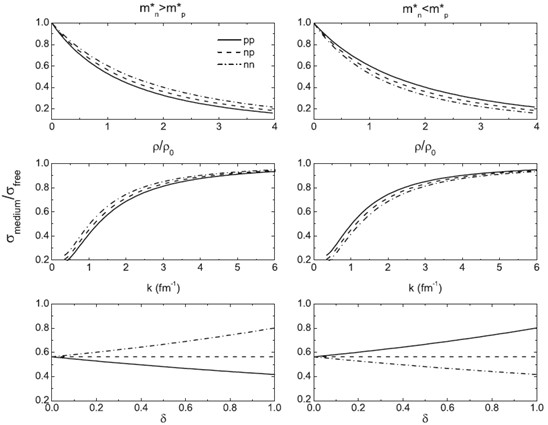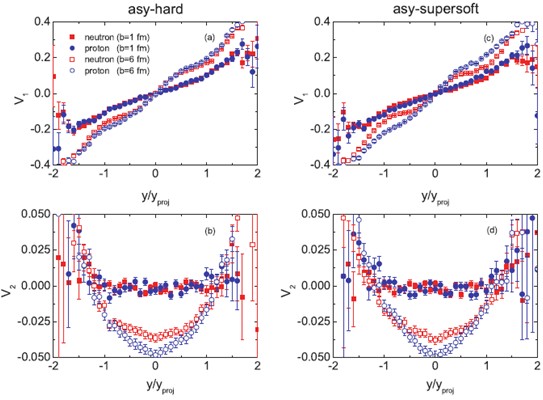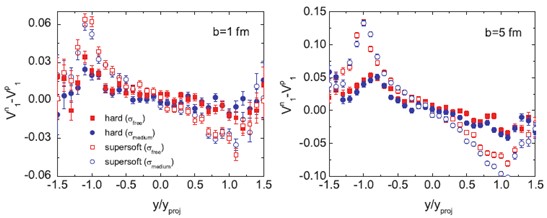Recently, researchers of the Theoretical Physics Group at Institute of Modern Physics (IMP), Chinese Academy of Sciences, have studied the nuclear in-medium effects on collective flows in heavy-ion collisions based on an isospin and momentum dependent transport model, namely, Lanzhou Quantum Molecular Dynamics (LQMD).
In the LQMD model, the in-medium elastic nucleon-nucleon (NN) cross sections are evaluated by using a scaling approach according to nucleon effective mass as shown in Fig. 1. The inelastic cross sections, in particular for the NΔ<->NN channel, are parameterized in accordance with the available experimental data. Dynamical evolutions of mesons (π, K) in nuclear medium are considered through meson-nucleon potentials.
The Researchers have investigated the transverse and elliptic flows of fast nucleons in the 197Au+197Au reaction at the incident energy of 400 MeV/nucleon. The results are shown in Fig. 2. The isospin effect is pronounced in the domain of projectile rapidity for transverse flows and in the mid-rapidity region for elliptic flows. Fig. 3 shows the rapidity distribution of the transverse flow difference between neutrons and protons. The distribution of the flow difference is sensitive to the stiffness of nuclear symmetry energy, in particular around the projectile rapidity. The in-medium cross sections and collision centrality almost do not affect the distribution of flow difference. The results will be helpful for the planned experiments at CSR in Lanzhou for extracting the high-density information of nuclear symmetry energy.
This work was supported by the National Natural Science Foundation of China under Grant Nos 10805061 and 11175218, and the Advancement Society of Young Innovation of Chinese Academy of Sciences.
The results have been published in Physical Review C 85 (2012) 014604.
URL: http://prc.aps.org/abstract/PRC/v85/i1/e014604

Fig. 1 In-medium nucleon-nucleon elastic cross section scaled by nucleon effective mass as functions of baryon density (δ=0.2), nucleon momentum (δ=0.2) and isospin asymmetry (ρ=ρ0). (Image by IMP)

Fig. 2 The Rapidity distributions of directed and elliptic flows of free nucleons in the 197Au+197Au reaction at the incident energy of 400 MeV/nucleon. (Image by IMP)

Fig. 3 The difference between neutron and proton directed flows in the 124Sn+124Sn reaction at the energy of 400 A MeV. (Image by IMP)

